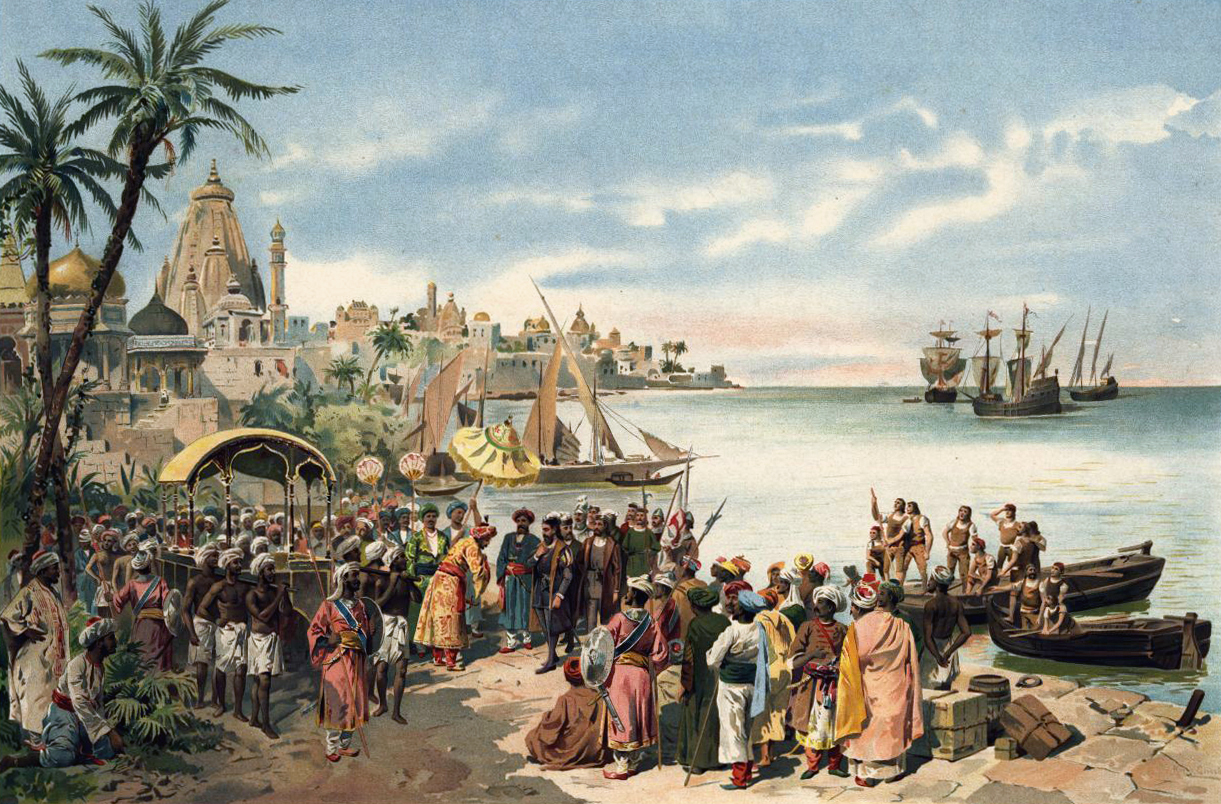
Īround 1480, da Gama followed his father (rather than the Sodrés) and joined the Order of Santiago. It has been claimed that he studied under Abraham Zacuto, an astrologer and astronomer, but da Gama's biographer Subrahmanyam thinks this dubious. The Portuguese historian Teixeira de Aragão suggests that he studied at the inland town of Évora, which is where he may have learned mathematics and navigation. Vasco also had one known sister, Teresa da Gama (who married Lopo Mendes de Vasconcelos). Vasco da Gama was the third of five sons of Estêvão da Gama and Isabel Sodré – in (probable) order of age: Paulo da Gama, João Sodré, Vasco da Gama, Pedro da Gama and Aires da Gama. Her father and her brothers, Vicente Sodré and Brás Sodré, had links to the household of Infante Diogo, Duke of Viseu, and were prominent figures in the military Order of Christ. Estêvão da Gama was appointed alcaide-mór (civil governor) of Sines in the 1460s, a post he held until 1478 after that he continued as a receiver of taxes and holder of the Order's commendas in the region.Įstêvão da Gama married Isabel Sodré, a daughter of João Sodré (also known as João de Resende), scion of a well-connected family of English origin. He rose in the ranks of the military Order of Santiago. Vasco da Gama's father was Estêvão da Gama, who had served in the 1460s as a knight of the household of Infante Ferdinand, Duke of Viseu. Vasco da Gama was born in 1460 in the town of Sines, one of the few seaports on the Alentejo coast, southwest Portugal, probably in a house near the church of Nossa Senhora das Salas. īronze statue of Vasco da Gama at his birthplace, Sines, Portugal In March 2016 thousands of artifacts and nautical remains were recovered from the wreck of the ship Esmeralda, one of da Gama's armada, found off the coast of Oman. The Portuguese national epic poem, Os Lusíadas, was written in his honour by Luís de Camões. He remains a leading figure in the history of exploration, and homages worldwide have celebrated his explorations and accomplishments. For his contributions, in 1524 da Gama was appointed Governor of India, with the title of Viceroy, and was ennobled as Count of Vidigueira in 1519. The latter was the largest and departed for India four years after his return from the first one.

It was not until a century later that other European powers, first the Dutch Republic and England, later France and Denmark, were able to challenge Portugal's monopoly and naval supremacy in the Cape Route.ĭa Gama led two of the Portuguese India Armadas, the first and the fourth. Portugal maintained a commercial monopoly of these commodities for several decades. The main spices at first obtained from Southeast Asia were pepper and cinnamon, but soon included other products, all new to Europe. Unopposed access to the Indian spice routes boosted the economy of the Portuguese Empire, which was previously based along northern and coastal West Africa. Īfter decades of sailors trying to reach the Indies, with thousands of lives and dozens of vessels lost in shipwrecks and attacks, da Gama landed in Calicut on. The sum of the distances covered in the outward and return voyages made this expedition the longest ocean voyage ever made until then. Traveling the ocean route allowed the Portuguese to avoid sailing across the highly disputed Mediterranean and traversing the dangerous Arabian Peninsula. The violence and hostage taking employed by da Gama and those who followed also assigned a brutal reputation to the Portuguese among India's indigenous kingdoms that would set the pattern for western colonialism in the Age of Exploration.

Da Gama's discovery of the sea route to India opened the way for an age of global imperialism and enabled the Portuguese to establish a long-lasting colonial empire along the way from Africa to Asia.

This is widely considered a milestone in world history, as it marked the beginning of a sea-based phase of global multiculturalism.

His initial voyage to India by way of Cape of Good Hope (1497–1499) was the first to link Europe and Asia by an ocean route, connecting the Atlantic and the Indian oceans and therefore, the West and the Orient. 1460s – 24 December 1524), was a Portuguese explorer and the first European to reach India by sea. Vasco da Gama, 1st Count of Vidigueira ( UK: / ˌ v æ s k oʊ d ə ˈ ɡ ɑː m ə/, US: / ˌ v ɑː s k oʊ d ə ˈ ɡ æ m ə/ European Portuguese: c.


 0 kommentar(er)
0 kommentar(er)
